Create an image from a sound, visualize music, I have been thinking about it for a long time ...
And then, as time went on, joined like the pieces of a puzzle, my knowledge as a physicist, programmer and webdesigner, my passion for Mandalas, my interest in alternative sciences, Chladni figures, cymatics, alternative medicine and my delight for music, ... to give birth to the "Soledine" software that I am proud to present to you.
Enjoy the images that are arising, let them operate on you !
The POWER of a MANDALA created from SOUND !
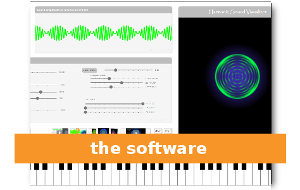
The software
The Soledine software permits to visualize sound waves. The resulting Mandalas are called Harmonic Sound Mandalas.
You can use for free the Soledine software:
Load a music and see the Mandalas take shape ...
The Soledine software (attention: works on Pc and MAC, but not on tablets and phones)
Video tutorial of the software
Instructions for the use of the software
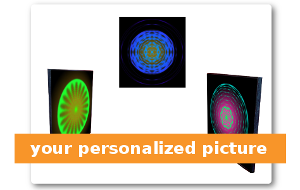
Your Soledine Mandala Panel
Create your Mandala with the Soledine software et get it printed on a wooden plate.
A unique harmonising decoration! An original present !

Your Soledine video
Send me a file with your music and you will get the corresponding video, realized with the Soledine software.
To see again and again (attention : additive effect ;-) and also a very original present !
Infos, prices and how to order.
What are Harmonic Sound Mandalas ?
The Harmonic Sound Mandalas are visualizations of sound waves realized by the Soledine software.
Here are some explanations on how they are obtained :
A sound wave is usually represented as an amplitude versus time.
In the Soledine software the wave is represented as a parametric equation, which gives rise to patterns in the form of Mandalas :
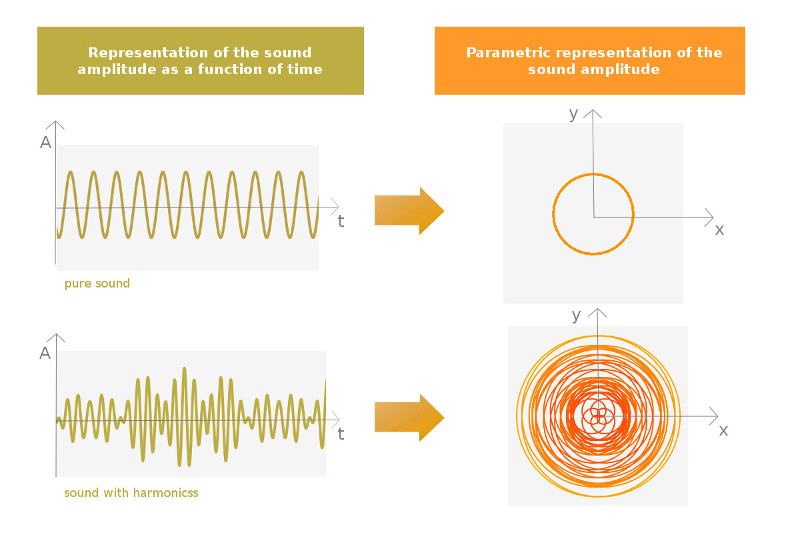
A simple sinusoidal wave will always give a circle.
A superposition of sinusoidal waves of different frequencies (sound with harmonics) gives more complex patterns. The complexity of the patterns depends on the ratio of the different frequencies.
To represent the musical notes we do not use the frequencies of the equally-tempered scale (which is the scale usually used in the West, for example on a piano keyboard), but the natural harmonics. If the C note has for example the freqeuncy f=1 ( or 261,63 or wathever value in fact, as only the ratio between the frequencies and not their absolute value is relevant), the G note will have the frequency 3 (or 3/2 when brought to the same octave), the E note will have the freqeuncy 5 (or 5/4 when brought to the same octave), and so on. In this way, for example, the following patterns are obtained :
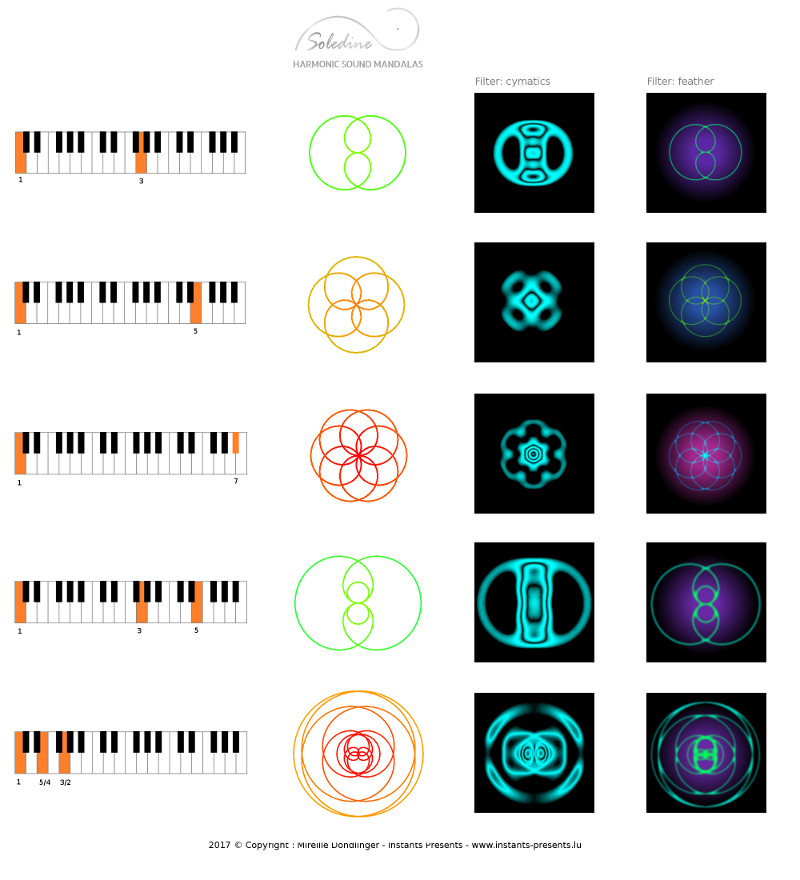
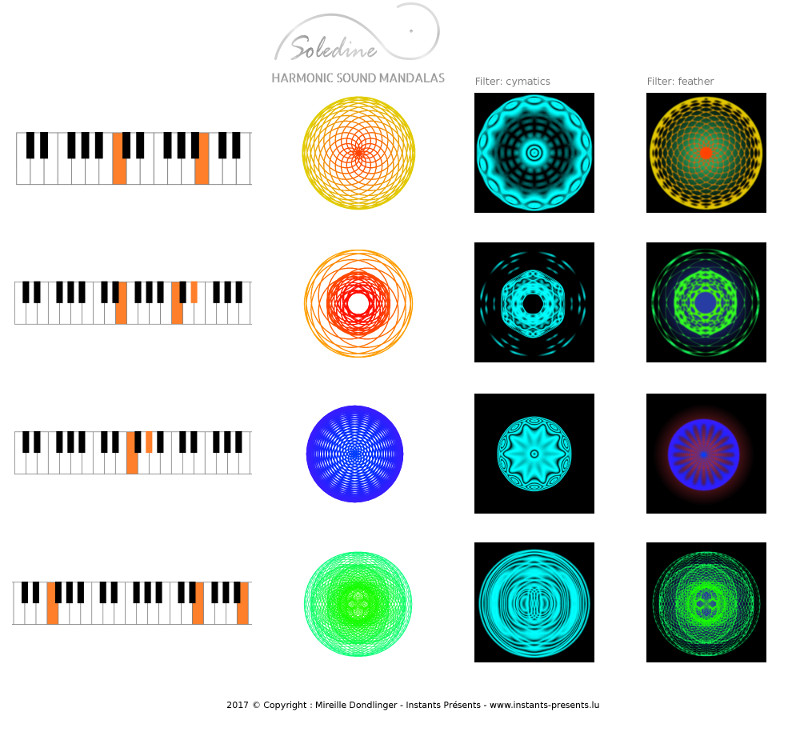
It is striking to note, how some of these patterns look like patterns that are found in nature (flowers, atoms, ...) or like geometric patterns used 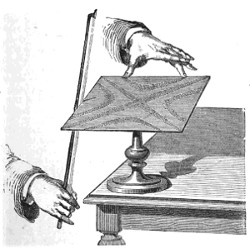 in ancient cultures. From there to say that the sound is at the origin of all form ... ?
in ancient cultures. From there to say that the sound is at the origin of all form ... ?
There is also a resemblance with patterns obtained experimentally : for example the Chladni figures (these are figures obtained by running a violon bow along the edge of a plate covered with sand) or with cymatics (a liquid layer subject to vibration, for example a plate filled with liquid is placed on a speaker). I invite you to search in your search engine for the terms "Chladni images" or "cymatic images" to learn more about it.
Some words about the similarity with the patterns obtained by cymatics :
A characteristic of the patterns obtained experimentally by cymatics is that the pattern obtained for a given frequency, depends totally on the experimental conditions, like the hight or diameter of the liquid layer. In fact the obtained pattern is the result of the interaction of the sound frequency with the liquid layer and the plate.
The patterns obtained with Soledine are a visualization of the pure frequencies, without interaction with any environment. This implies also that a simple frequency (without harmonics) does not result in a real pattern (in fact a simple frequency always gives only a circle, wathever the frequency; this is coherent which what happens in music : it is not the frequency that matters but the ratios of the frequencies of the different notes), but we need the interaction of at least 2 frequencies to get a real pattern.
My assumption is that in the case of cymatics, if you play a single frequency, the pattern appears because of the interaction of this frequency with the natural frequency of the liquid (depending on the experimental setup).
The Soledine software permits to visualize sound without any interaction with the external environment.
Enjoy the images that are arising, let them operate on you !
The POWER of a MANDALA created from SOUND !






